Aesthetics
Our Aesthetic Department Framework
Creating a Vibrant Aesthetics Culture (VAC) through:
-
Empowering our students to be a confident Artist (Resilience)
-
Enabling them to think critically through the understanding of different perspectives and solve problems in a critical manner (Respect)
-
Allowing them to get in touch with their inner voice – Emotions and Expressions (Integrity)
-
Facilitating connection with other human beings, creating empathy through the Arts (Care)
-
Creating diversified thinking through the understanding of different Global Cultures (Respect)
Our Art Curriculum
Approaches:
-
Inquiry-based learning approach where we emphasis both the process and the final product.
-
Develop artistic vocabulary to enable them to give constructive feedback of artworks.
-
Student-centric lessons to boost confidence, curiosity and imagination through active class discussions and enjoyment in art making.
-
Create a broad-based exposure of different art forms through a variety of visual art programmes to engage students with different interests, needs and abilities.
Art modular programmes:
|
P3 |
Clay Exploration
|
|
P4 |
Batik Painting
|
|
P5 |
Chinese Brush Painting
|
|
P6 |
Digital Art (Animation)
|
Our Music Curriculum
Approaches:
-
Nurture the love and joy of music through active listening, creating musical expressions and performing.
-
Create awareness and appreciation towards music of various cultures.
-
Adopt and plan curriculum according to the spiral approach.
-
Exposing students through music and movement to help lower primary students develop their psychomotor skills while learning the rudiments of music (fundamental for music).
-
Develop instrumental techniques using the WALT and WILF.
-
Music composition and creation using technology.
-
Ensemble playing across P1 – 6 to help students develop musicianship, confidence and learn to think critically.
-
-
Create a broad-based exposure of different genres, instrumental skills and music experiences through a variety of music programmes that engages students with different interests, needs and abilities.
-
The use of different instructional techniques that cater to the different learning needs of the class, helping them achieve the desired Learning Objectives of the lesson.
Music Modular Programmes
|
Level |
Modular programmes |
|
P1 |
Music & Movement |
|
P2 |
Orff Ensemble |
|
P3 |
Instrumental skills: Keyboard & Ukulele
|
|
P4 |
Global Music & Cultural Awareness
|
|
P5 |
Instrumental Skills: Ukulele Chords and Finger Plucking
|
|
P6 |
Ensemble skills: iPad Live Jam Band |
How do we help our students to think critically?
To help our students to be critical thinkers, we have adopted the following thinking routines in our Art & Music lessons.
Thinking Routines

This routine encourages/helps students to:
-
Make careful observations
-
Think critically and make thoughtful interpretations
-
Stimulate curiosity
-
Inquire about what they have observed
-
Find a connection with what they already know
Applying various thinking routines help students to share their thought process at each step before moving on to the next. This allows the class to layer upon each other’s ideas or scaffold their thought process, thus stimulating more in-depth discussions and infusing creativity and problem-solving skills.
Thinking Routines for Music
1. Experience – Content – Apply (ECA) approach for lower primary
ECA approach mainly allows students to experience and perceive a new concept through kinaesthetic, aural and visual activities first before teaching it to them. These stimulus-based activities help the students to have a better grasp when a new concept is being taught as they were able to relate to it, making sense of what they have learnt. After they have understood what was taught, the application phase allows students to apply the new concept, reinforcing their understanding. Through the ECA approach, students develop critical and creative thinking when transferring their knowledge effectively on their own in the application phase.
2. Creative cycle for upper primary
The Creative Cycle is a thinking process that helps students to constantly reflect and evaluate their own performance/s or practice, constantly seeking ways to improve. They identify the problem using their pre-requisite knowledge, then infuse creativity to solve it. Each time when they practice/play, improvement must be made. This form of deliberate practice trains them to be involved in their own self-assessment and take ownership in their own learning. The teacher’s role is to help facilitate and provide feedback to guide them, helping them with various practicing strategies.
Other Aesthetic Programmes
On-the-Spot Art Competition (P1 to P6)
Museum-Based Learning (P4)
Music Fiesta (P1 & P2)
Music mini-performances
Aesthetics Day
Students performing on various instruments during our very first Aesthetics Day
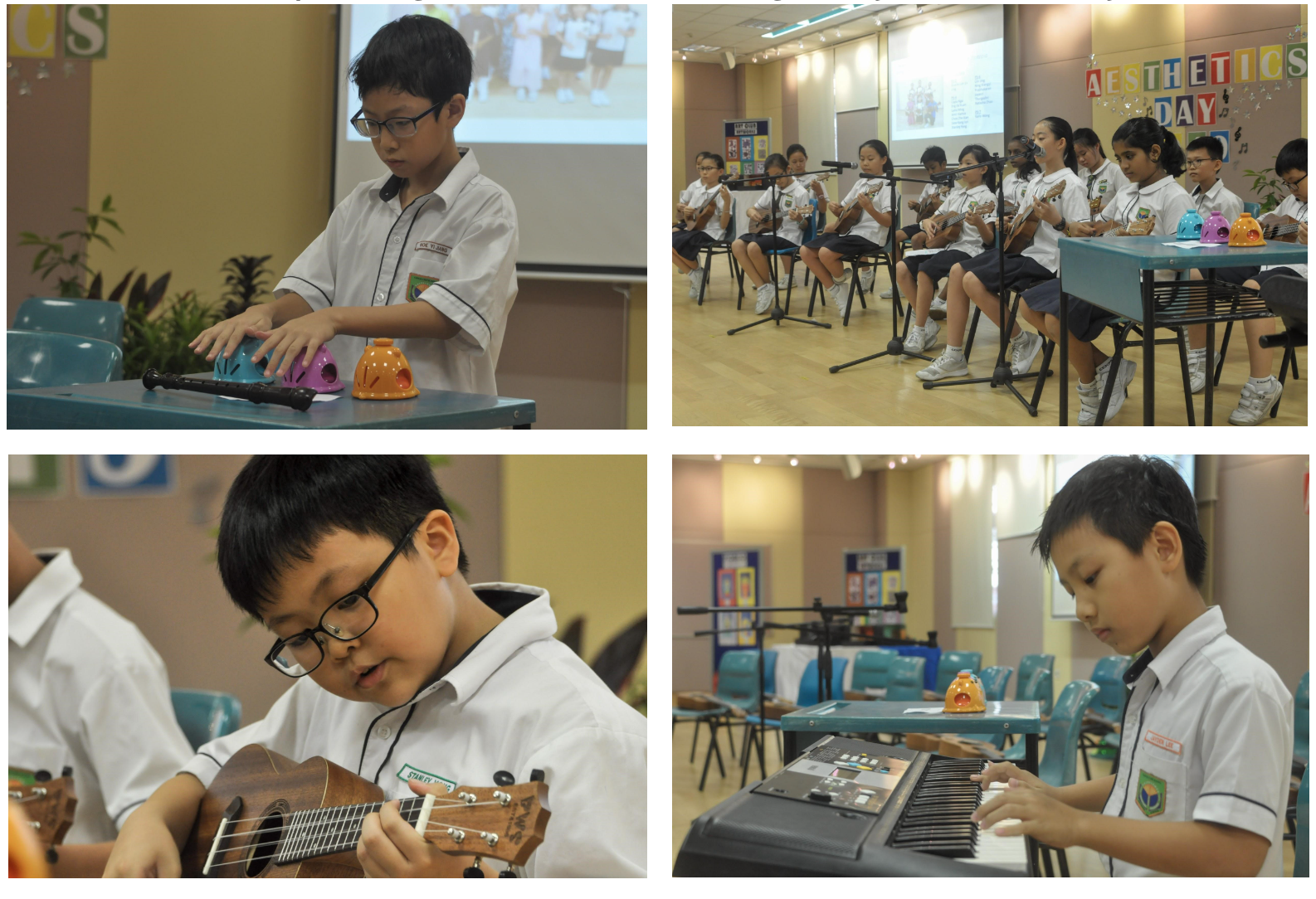

P2 Sing and Dance Performers during Teacher’s Day
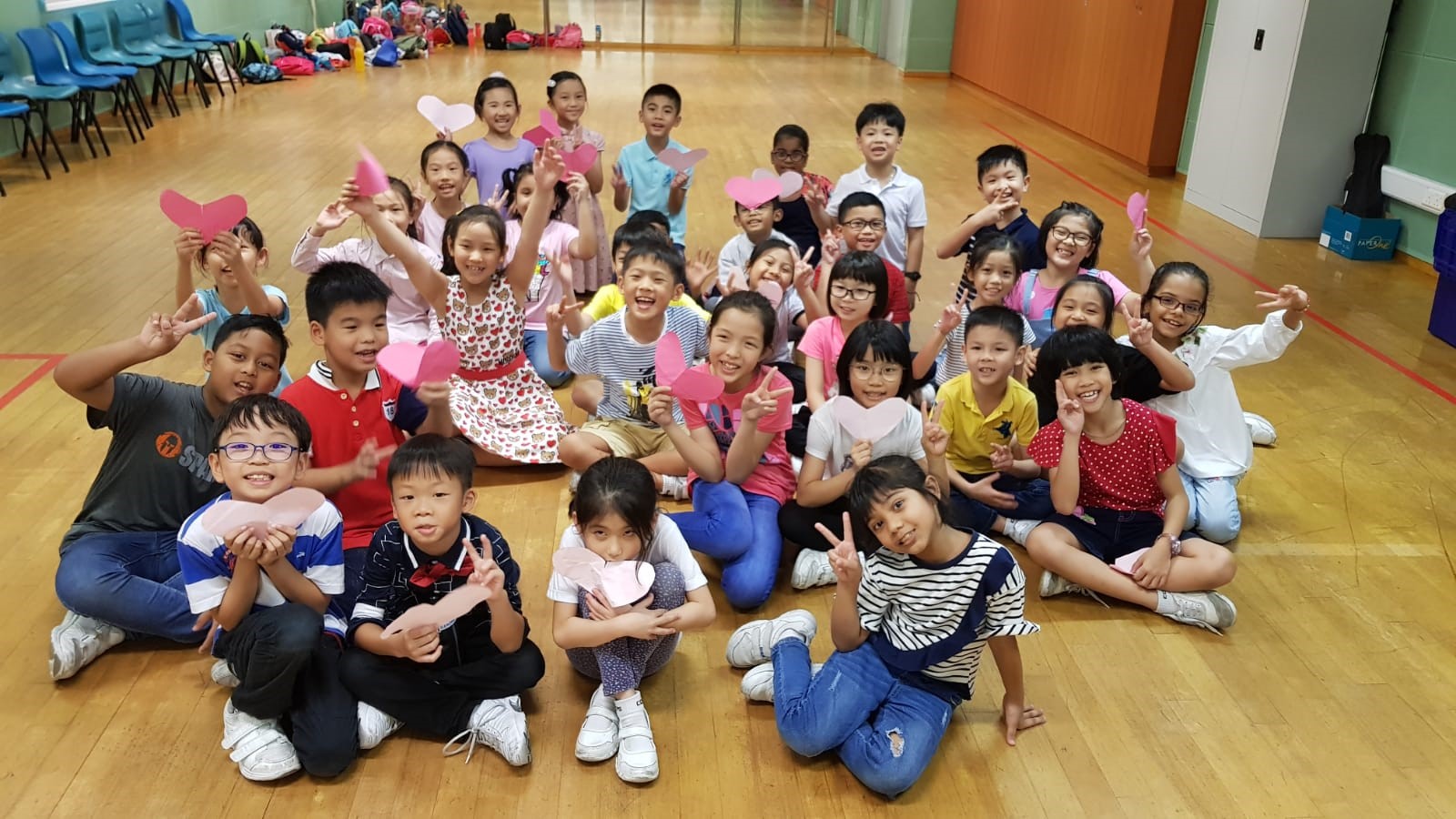
Lower Primary Music Fiesta

Student-Centric lessons that encourages exploration, problem solving and discovery!
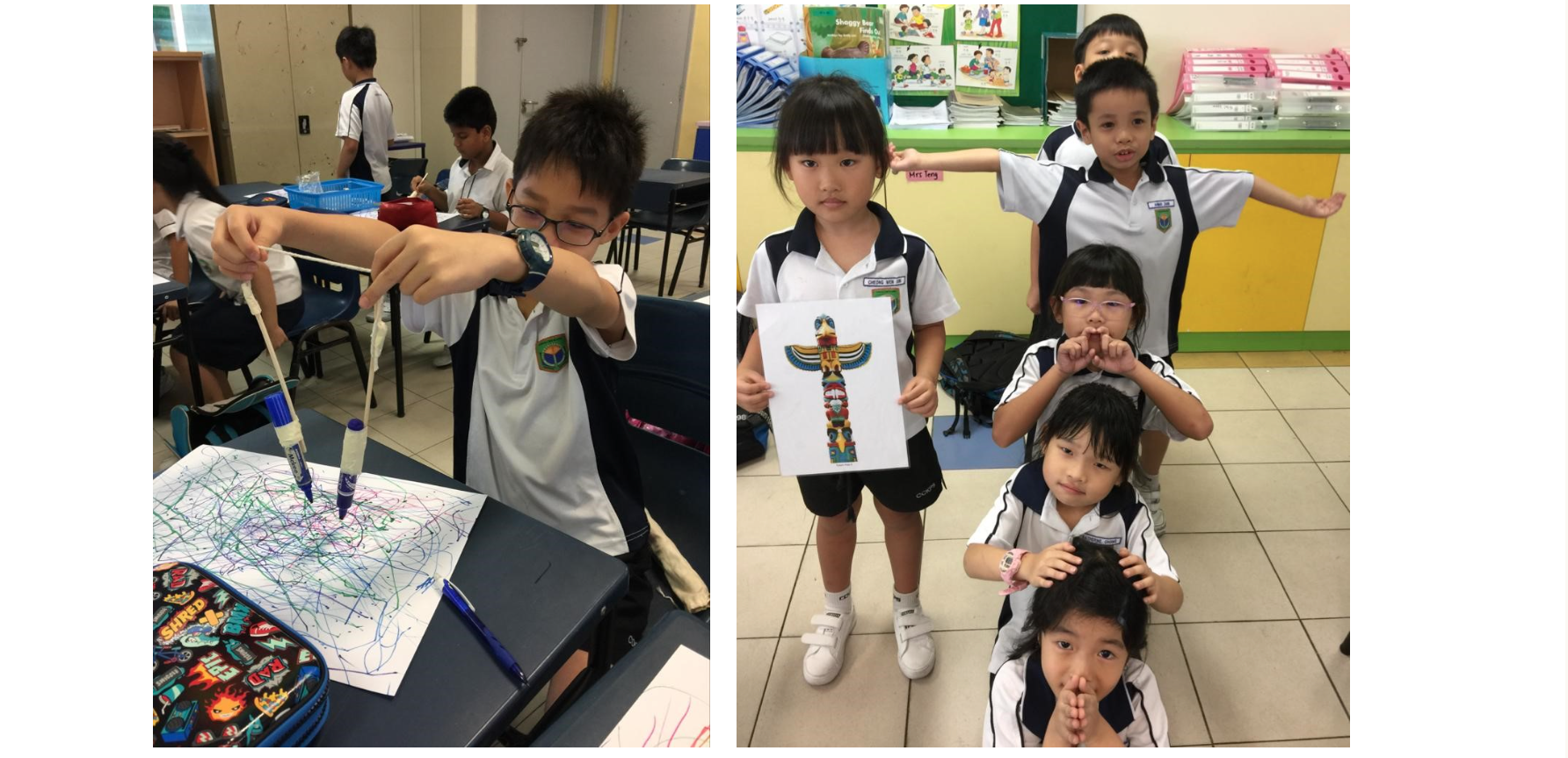
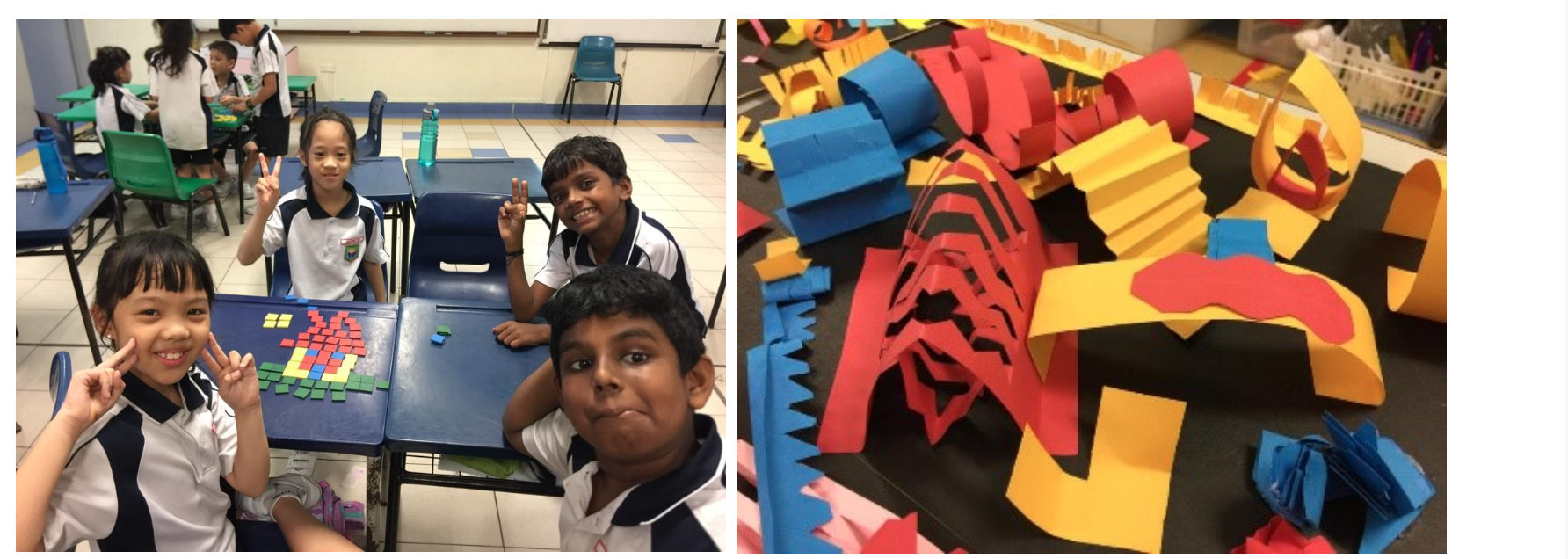
Primary 4 Museum Based Learning to NUS Museum

P4 Batik Painting

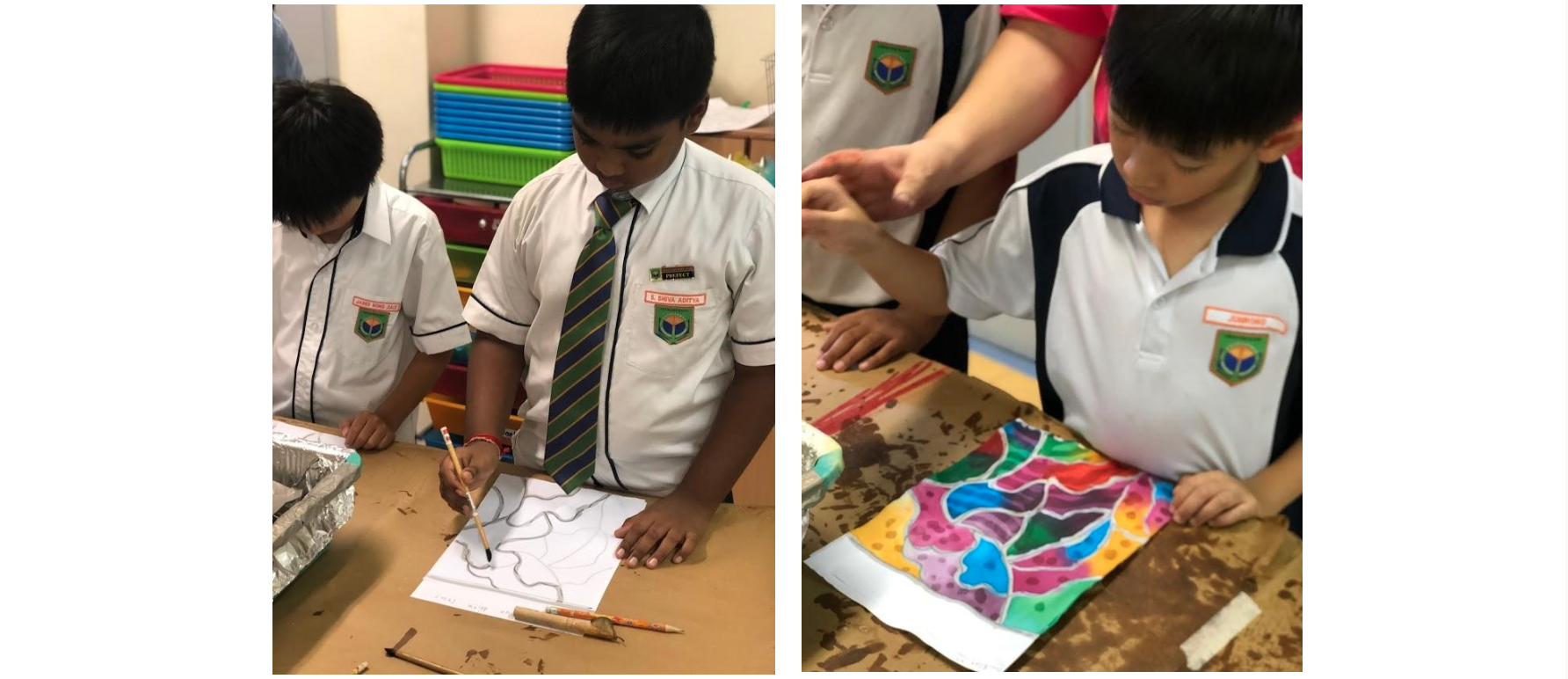
P5 Chinese Ink Painting


